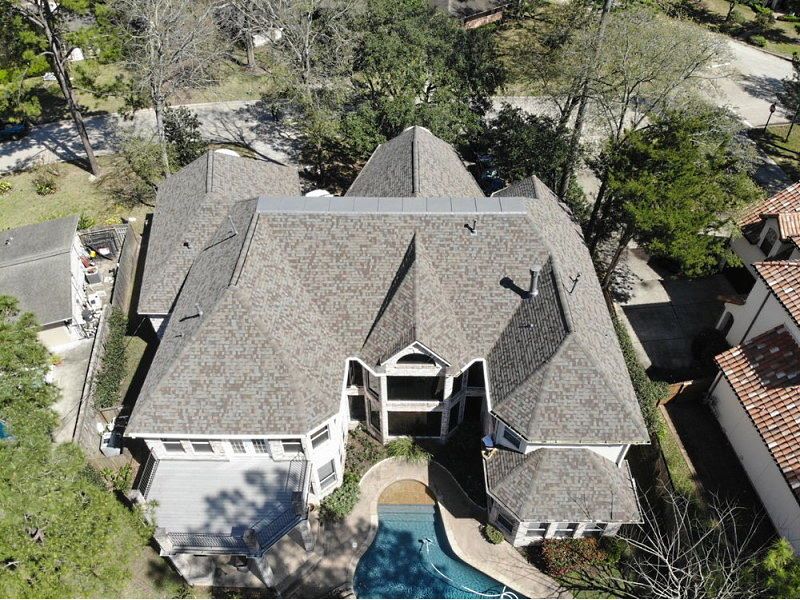Introduction
Flat roofs, while aesthetically pleasing and space-efficient, can present a unique set of challenges for homeowners and commercial property managers alike. Whether it’s due to weather conditions, material degradation, or improper installation, flat roofing problems can lead to significant issues if not addressed promptly. In this comprehensive article, we will explore innovative solutions for common flat roofing problems, ensuring you are well-equipped to tackle any roofing issue that may arise. From understanding the types of flat roofs to exploring effective repair strategies, this guide aims to provide insights that will enhance your knowledge and empower you in making informed decisions.
Understanding Flat Roofing Systems
What is a Flat Roof?
Flat roofs are essentially horizontal surfaces that have a slight slope for drainage purposes. They are commonly found in commercial buildings but are increasingly used in residential homes due to their modern aesthetic and additional usable space.
Types of Flat Roofing Materials
Built-Up Roofing (BUR): Comprising multiple layers of bitumen and felts, BUR is one of the oldest flat roofing systems. Modified Bitumen: This system combines asphalt with modifiers to enhance its performance. EPDM (Ethylene Propylene Diene Monomer): A synthetic rubber membrane known for its durability and flexibility. TPO (Thermoplastic Polyolefin): A single-ply membrane that reflects heat and is energy-efficient. PVC (Polyvinyl Chloride): A robust option often used in commercial applications due to its resistance to chemicals and UV rays.Why Choose Flat Roofing?
Flat roofs offer several advantages:
- Increased accessibility for maintenance Utilization of rooftop space for gardens or solar panels Cost-effective installation compared to pitched roofs
Common Flat Roofing Problems
1. Water Ponding Issues
One of the most prevalent problems with flat roofs is water ponding, where water collects on the surface instead of draining away.
Causes of Water Ponding
- Improper drainage design Blocked gutters or downspouts Material sagging over time
Innovative Solutions
- Installation of additional drains Regular maintenance to clear debris from drainage systems Sloping adjustments during roof replacement
2. Roof Leaks
Leaks can develop due to membrane punctures, seam failures, or flashing issues.
Signs of Roof Leaks
- Water stains on ceilings Mold growth in attic spaces Visible damage on roof surface
Effective Leak Repair Strategies
Utilizing professional roof leak detection services can identify problem areas quickly.

The Role of Licensed Roofing Contractors
Why Hire Licensed Roofing Contractors?
Hiring licensed roofing contractors ensures that you receive quality workmanship backed by insurance coverage and warranties.
What to Look For
- Certifications and licenses specific to your region Positive reviews from previous customers Experience with similar projects
Emergency Roofing Services
When Are Emergency Services Needed?
Severe weather events such as storms or hail damage can necessitate emergency roof repairs.
Identifying Emergency Roof Damage
If you notice missing shingles, significant leaks, or extensive damage after a storm, contact professionals immediately.
Cost Considerations in Roof Repairs
Estimating Roof Repair Costs
Understanding the costs associated with roof repairs is crucial for budgeting.
| Service Type | Average Cost Range | |-------------------------------|--------------------| | Roof Inspection | $150 - $300 | | Minor Leak Repair | $200 - $500 | | Complete Roof Replacement | $5,000 - $15,000 |
Flat Roof Maintenance Services
Importance of Regular Maintenance
Regular inspections can prevent minor issues from becoming major problems.
Recommended Maintenance Practices
Inspecting for debris accumulation Checking flashings and seams regularly Scheduling professional inspections annuallyRoof Replacement vs Repair: Making the Right Decision
When Is Replacement Necessary?
If your flat roof shows extensive wear or has reached the end of its lifespan, replacement might be necessary.
Factors Influencing Replacement Decisions
- Age of the existing roof Extent of damage found during inspection Long-term cost-benefit analysis
Innovative Solutions for Common Flat Roofing Problems
In tackling common flat roofing challenges, innovative solutions often involve incorporating modern technology and materials:
1. Reflective Coatings: These help reduce heat absorption, thereby lowering cooling costs. 2. Green Roof Technology: Installing vegetation on rooftops not only improves aesthetics but also enhances insulation. 3. Smart Drainage Systems: Advanced systems automatically adjust water flow based on rainfall intensity. 4. Robust Membrane Options: Newer materials come with enhanced durability against environmental stressors like UV rays and extreme temperatures.
FAQs
1. How do I know if my flat roof needs repair?
Look out for signs like water stains indoors, visible cracks or blisters on the surface, and recurring leaks during rainstorms.
2. What should I expect from a roof inspection?
A thorough inspection will assess drainage systems, membrane integrity, flashing condition, and overall structural soundness.
3. How much does an emergency roof repair cost?
Costs vary widely depending on the extent of damage but generally range from $200 to $1,000 for immediate services.
4. What materials are best for flat roofs?
EPDM is widely recognized as one of the best materials due to its longevity; however, TPO is also gaining popularity thanks to its energy efficiency.
5. Can I perform my own repairs?
While minor fixes can sometimes be handled independently, it’s advisable to consult certified roofing contractors for complex issues.
6. How often should I schedule maintenance services?
Annual inspections are recommended; however, biannual checks may be necessary https://www.reddit.com/user/southernroofal/ in areas prone to severe weather.
Conclusion
Navigating the complexities of flat roofing requires an understanding of both potential problems and effective solutions—including preventive measures through regular maintenance services and opting for innovative technologies when necessary. By relying on licensed roofing contractors who possess expertise specifically tailored towards flat roofs—and being vigilant about signs indicating trouble—homeowners can ensure their properties remain safe and structurally sound over time.
Embracing proactive approaches will undoubtedly reduce risks associated with common flat roofing problems while enhancing your investment's longevity—ultimately leading you toward peace of mind regarding your roofing needs!